One of the true joys of travel is sampling food for the first time and instantly falling in love. Unlike other exotic foods which are more of an acquired taste, dim sum was love at first bite.
I can still remember trying it for the first time one morning in Malacca, Malaysia at a popular little Chinese tea house. Elderly Chinese ladies wearing aprons pushed around carts filled to the brim with steaming trays releasing a mixed aroma of shrimp, pork, custard and red bean paste.
Men and women engaged in animated conversations at large tables while others sat alone sipping on tea while reading a newspaper.

Not knowing what to order (and without the aid of an English menu) I used hand gestures and pointing to select items that were placed on my table in delicate little trays.
Soon a pot of hot tea was placed on my table. With a tiny tea cup, chopsticks, a small serving bowl and sauce dish I randomly plucked at an ever growing spread of small bite sized food covering my table.
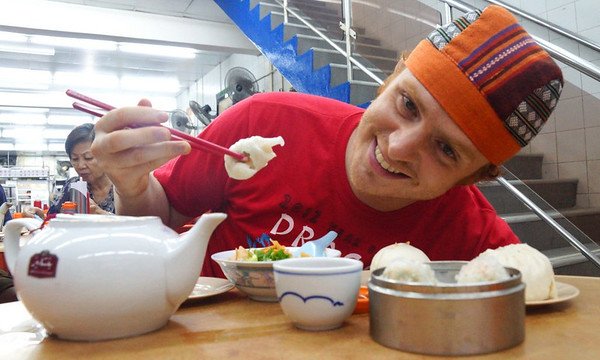
Our Guide To Eating Dim Sum In Asia
Dim sum is a delectable style of Chinese cuisine that has become a beloved culinary tradition worldwide. Its origins date back to ancient China, where it was served in the teahouses along the Silk Road trade routes.
The teahouses were popular gathering places for merchants, scholars, and artists who would stop there to rest, socialize and share ideas. As they sipped their tea, they were served small portions of food known as “yum cha” that gradually became more elaborate and varied, giving birth to the tradition of dim sum.
Dim sum gained popularity in the Guangdong region of China during the Song Dynasty, where it was a convenient and quick meal for travelers on the go. Over time, it became an essential part of Guangdong cuisine and spread throughout China and beyond, becoming a staple of Chinese cuisine.
source: Samuel and Audrey on YouTube
Dim sum is a culinary adventure in itself, with an array of small dishes that are often served in steamer baskets or on small plates. From savory dumplings and buns to sweet cakes and pastries, dim sum offers a wide variety of flavors and textures to tantalize the taste buds.
While dim sum is enjoyed all over the world, there is nothing quite like the experience of savoring it in its birthplace, Guangdong. The region boasts some of the best dim sum restaurants in the world, with a range of options that cater to every taste and budget.
Travelers to Guangdong can explore the bustling streets of Guangzhou and Shenzhen, where they will find countless dim sum establishments serving up a delightful culinary experience. For those looking for a more authentic experience, they can visit the rural areas of Guangdong, where they can sample dim sum in traditional teahouses, complete with bamboo steamers and tea sets.
Dim sum is a true culinary gem, with a rich history and an array of flavors that has captivated the world. Its origins in the teahouses of ancient China have led to a tradition that continues to delight and inspire today, making it a must-try for any food-loving traveler.
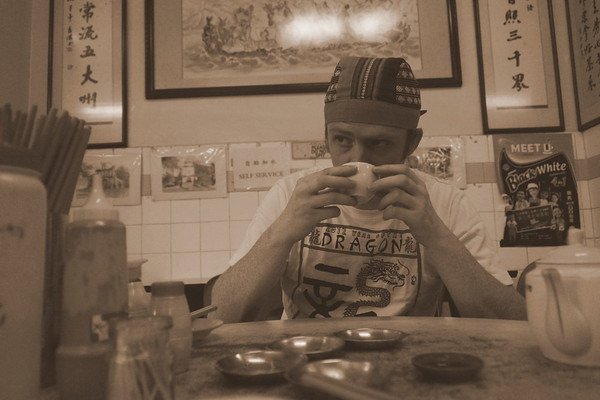
What is Dim Sum?
Dim Sum is bite sized portions of Cantonese food served on tiny plates or in steamer baskets.
Traditionally, dim sum is wielded around in carts – pushed from table to table – where customers can select their order from the comfort of their own table; however, these days in Hong Kong, space is at a premium and unless you’re dining at a banquet hall style restaurant, you’re most likely to place your order on an slip of paper where you select your food items on a checklist.
To invite someone out for dim sum (点心 / 點心) is roughly translated in Cantonese as going out to ‘drink tea’ at a restaurant. It’s similar to etiquette in Korea, whereby you’d ask someone out for dinner by inviting them to join you for rice.
The word Dim sum literally translates as ‘touch the heart’ was originally intended to only be a snack; however, it is now a staple of Cantonese dining culture and restaurants can be found all over Hong Kong.
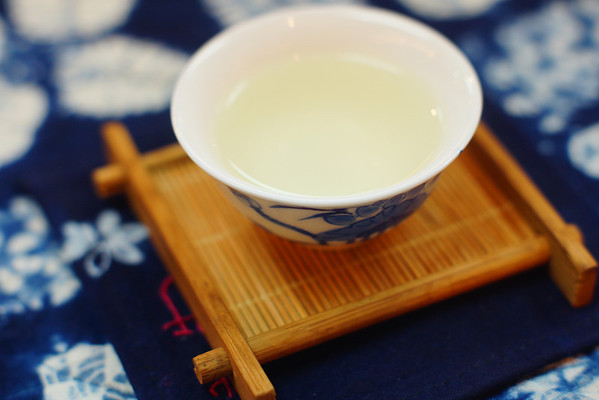
Dim Sum Decisions: What to order?
Dim Sum restaurants typically feature a menu with options galore; thus, it can be difficult deciding what to order. To simplify the process try sampling some of my favorites:
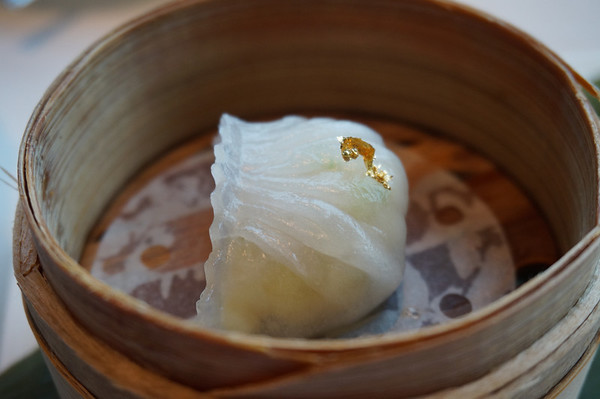
Shrimp Dumplings (Har gow: 虾饺 / 蝦餃)
These delectable transparent dumplings are stuffed with prawns and were instantly one of my favorites. Apparently, dim sum masters are judged based on the skill of preparing this particular dish. It’s such a delicate dish where the skin must be thin and transulucent yet sturdy enough not to spill open its contents when picked up by chopsticks. This is one of the more expensive dim sum dishes often costing 1.5 times to double the price of others.
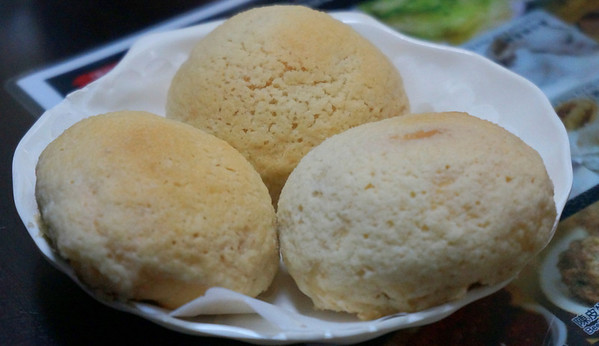
Baked Barbecue Pork Buns (Cha siu bao: 叉烧包 / 叉燒包)
If somehow I was forced to only ever one kind of dim sum to eat for the rest of my life (oh, what a tragedy!) I would select baked barbecue pork buns. The baked variety (they’re also served steamed) features a crispy exterior that is browned and glazed with light sugar producing a delectable golden crust. The interior is filled with saturated slices of slow roasted pork tenderloin combined with a syrupy concoction of hoisin, soy and oyster sauce, sesame oil and sugar. When I sink my teeth into these baked pork buns I just let it roll around and melt in my mouth.
Sticky Rice with Chicken in a Lotus Leaf Wrap (Lo mai gai: 糯米鸡 / 糯米雞)
For those unfamiliar with dim sum, having a large lotus leaf wrap brought to your table could potentially raise eyebrows. However, for those brave enough to peal away at the leaf wrapper will be rewarded with a sticky rice, chicken, Chinese mushrooms and sauce. Considered a southern Chinese specialty, glutinous rice forms a base that is filled with chicken, Chinese mushrooms, sausage and scallions. If you’ve ever tried eating Thai Mango Sticky Rice it is similar in terms of the way the rice is prepared.

Sesame Ball (Jin deui: 煎䭔 煎堆 – 麻团 / 麻糰)
Those with a sweet tooth will be rewarded at the dim sum table. Be sure to try sweet sesame balls, a Chinese pastry, made with a lotus paste filling and crispy outer exterior consisting of glutinous rice flour coated with sesame seeds.
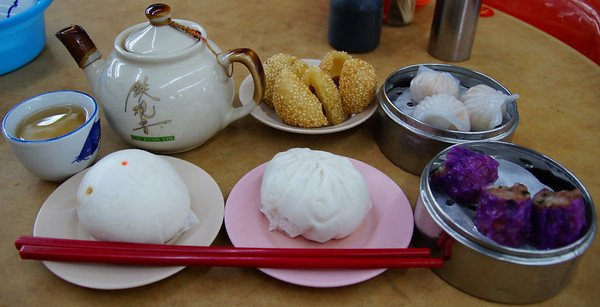
Complete Dim Sum List:
Here is a complete list of dim sum:
1. Siu Mai (Pork and Shrimp Dumplings)
Siu Mai is a dim sum classic that you simply can’t miss. These open-topped dumplings are filled with a savory mixture of ground pork, shrimp, mushrooms, and sometimes water chestnuts. Topped with a bright orange dot of crab roe or carrot, Siu Mai is steamed to perfection, offering a juicy bite with every mouthful.
2. Har Gow (Shrimp Dumplings)
Har Gow, or shrimp dumplings, are a dim sum staple known for their translucent, thin skin that encases plump, juicy shrimp. The dough is made from a mix of wheat and tapioca starch, giving it a slightly chewy texture that perfectly complements the tender shrimp filling. These dumplings are a delicate treat that require a skilled hand to make, as the wrappers are notoriously difficult to work with.
3. Char Siu Bao (BBQ Pork Buns)
Char Siu Bao is a crowd favorite that combines sweet and savory flavors in one fluffy, steamed bun. The filling is made from tender pieces of char siu, or Chinese BBQ pork, marinated in a sweet and savory sauce. The dough is soft and pillowy, making these buns a comforting and satisfying option for any dim sum feast.
4. Cheung Fun (Rice Noodle Rolls)
Cheung Fun is a versatile dim sum dish that features silky, smooth rice noodle rolls filled with ingredients like shrimp, beef, BBQ pork, or vegetables. These rolls are usually drizzled with a light soy sauce, adding a savory touch to the delicate rice noodles. The combination of the soft, slippery noodles and the flavorful fillings makes Cheung Fun a textural delight.
5. Lo Mai Gai (Sticky Rice in Lotus Leaf)
Lo Mai Gai is a savory dish made from sticky rice wrapped in a lotus leaf. The rice is typically filled with a mixture of chicken, Chinese sausage, mushrooms, and sometimes dried shrimp or chestnuts. The lotus leaf imparts a subtle, earthy flavor to the rice, making this dish a fragrant and filling option on any dim sum menu.
6. Xiao Long Bao (Soup Dumplings)
Xiao Long Bao, or soup dumplings, are a must-try for anyone who loves a bit of drama with their dim sum. These delicate dumplings are filled with a flavorful pork filling and a hot, savory broth. The trick is to gently bite into the dumpling to release the broth before enjoying the rest of the dumpling. Xiao Long Bao requires a bit of skill to eat, but the delicious burst of flavor is well worth it.
7. Spring Rolls
Spring Rolls are a dim sum classic that offer a satisfying crunch with every bite. These deep-fried rolls are filled with a mixture of vegetables, such as cabbage, carrots, and mushrooms, and sometimes include pork or shrimp. Served with a side of sweet and sour sauce, they are a delightful contrast to the softer steamed dishes on the menu.
8. Turnip Cake (Lo Bak Go)
Turnip Cake, or Lo Bak Go, is a savory dim sum dish made from grated Chinese turnip (daikon radish), rice flour, and often bits of Chinese sausage, dried shrimp, and mushrooms. The mixture is steamed into a cake and then pan-fried to give it a crispy exterior. The soft, chewy inside and crispy outside create a satisfying contrast that makes Turnip Cake a popular choice.
9. Chicken Feet (Feng Zhua)
Chicken Feet, known as Feng Zhua, are a dim sum dish that might be an acquired taste, but they’re a beloved delicacy in Cantonese cuisine. The feet are typically marinated in a savory, slightly sweet sauce made from black beans, soy sauce, and chili, then steamed until tender. The gelatinous texture and bold flavors make chicken feet a dish that’s rich in taste and cultural significance.
10. Egg Tarts (Dan Tat)
No dim sum meal is complete without a sweet treat, and Egg Tarts, or Dan Tat, are the perfect way to end your feast. These tarts feature a flaky, buttery pastry shell filled with a smooth, creamy egg custard. Served warm, they offer a delicate balance of sweet and savory flavors that melt in your mouth.
11. Custard Buns (Liu Sha Bao)
Custard Buns, or Liu Sha Bao, are a delightful dim sum dessert that features a fluffy steamed bun filled with a rich, molten custard made from salted egg yolks, butter, and sugar. When you bite into these buns, the warm, gooey custard oozes out, offering a sweet, creamy treat that’s both indulgent and satisfying.
12. Steamed Spare Ribs (Pai Guat)
Steamed Spare Ribs, or Pai Guat, are a flavorful dim sum dish made from bite-sized pieces of pork ribs marinated in a mixture of garlic, black beans, and soy sauce. The ribs are then steamed until tender, resulting in a dish that’s packed with umami flavor and a bit of a kick from the black beans.
13. Lotus Leaf-Wrapped Glutinous Rice (Lo Mai Fan)
Similar to Lo Mai Gai, this dish is made from glutinous rice wrapped in a lotus leaf, but the difference lies in the fillings. Lo Mai Fan often includes a variety of ingredients such as Chinese sausage, chicken, dried shrimp, and mushrooms. The rice absorbs the flavors of the fillings and the lotus leaf, creating a fragrant and flavorful dish.
14. Mango Pudding
For a refreshing finish, Mango Pudding is a light and fruity dim sum dessert that’s perfect after a hearty meal. Made from fresh mango puree, cream, sugar, and a touch of gelatin, this chilled dessert is both smooth and sweet, with the vibrant flavor of ripe mangoes shining through.
15. Beef Ball (Ngau Yuk)
These savory beef balls are a dim sum favorite, made from minced beef mixed with water chestnuts, scallions, and cilantro. They’re typically steamed and served with a light soy-based dipping sauce. The texture is tender and slightly springy, making them a delightful savory option.
16. Fried Taro Dumplings (Wu Gok)
Fried Taro Dumplings, or Wu Gok, are known for their unique texture and flavor. The outside is crispy and slightly flaky, while the inside is soft and filled with a savory mixture of ground pork and taro. The contrast between the crisp shell and the creamy filling is what makes this dish stand out.
17. Pineapple Buns (Bo Lo Bao)
Despite the name, Pineapple Buns don’t actually contain pineapple. Instead, the name comes from the bun’s golden, crusty top, which resembles a pineapple’s skin. Inside, the bun is soft and sweet, often filled with custard or butter, making it a popular dim sum treat.
18. Shrimp and Chive Dumplings (Gao Choi Gao)
These dumplings are a variant of the classic Har Gow, filled with a mixture of shrimp and chives. The chives add a slight oniony flavor that complements the sweetness of the shrimp. The dumpling skin is typically translucent and slightly chewy, making it a delightful bite.
19. Sesame Balls (Jian Dui)
Sesame Balls are a popular dim sum dessert, featuring a crispy, golden exterior coated in sesame seeds and filled with sweet red bean paste. The outside is made from glutinous rice flour, giving it a chewy texture, while the filling is smooth and sweet, making it a satisfying end to your dim sum meal.
20. Almond Jelly (Xing Ren Dou Fu)
Almond Jelly is a light, refreshing dessert made from almond-flavored gelatin. It’s usually served chilled and cut into cubes, often accompanied by a sweet syrup or fruit. The delicate almond flavor and smooth texture make it a perfect palate cleanser to finish off a dim sum feast.
Dim Sum Dining Etiquette
Dim sum is a social meal. Friends from Hong Kong have mentioned the optimal group dynamic is 3-4 people considering dishes typically are served in portions consisting of 3-4 small serving sizes.
If you’re alone don’t let that prevent you from frequenting a dim sum restaurant. In the past, I’ve gone solo and feasted on many trays of dim sum alone.
If you want to eat more like a local don’t fill up a sauce tray with soy sauce. Dim sum ‘done well’ doesn’t require sauce. You won’t notice locals eating at their favorite spot dipping their dim sum in any sauce.
Where To Eat Dim Sum in Hong Kong?
Dim Sum Sqaure (Hong Kong Island)
This small family run dim sum restaurant is located in Sheung Wan. We’ve typically had to wait for a table. I’ve never tasted better barbecue pork buns (Cha siu bao) anywhere else. Try to come in the late afternoon or before lunch hour to avoid the crowds. Two can dine for 70-100 Hong Kong Dollars
G/F, 88 Jervois Street, Sheung Wan
上環蘇杭街88號地下
Tim Ho Wan (Kowloon)
Tim Ho Wan has the impressive distinction of being the cheapest Michelin Starred restaurant in Hong Kong. High quality dim sum at affordable prices is what brings in people by the droves. We ended up dining here for the first time with a group of fellow expats based in Hong Kong. We’ve ended up coming back many times considering it is located within walking distance from our hotel in Mong Kok.
Shop 72, Ground Floor (Outside), Olympian City 2 | Olympian City Mall, Hong Kong, China (Mong Kok)
大角咀海庭道18號奧海城二期G樓72號舖
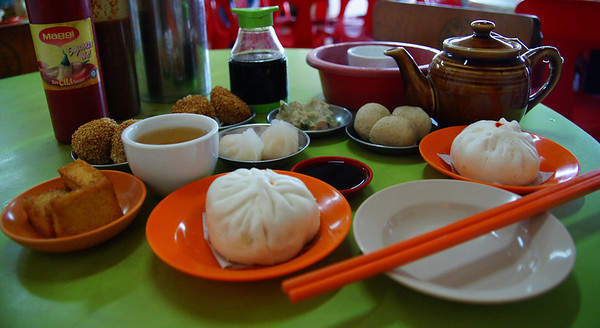
Other Dim Sum Locations In Hong Kong
Hong Kong is considered by many as the birthplace of dim sum, and the city has an abundance of restaurants serving up this delicious Cantonese cuisine. Here are some of the best dim sum locations in Hong Kong, along with a brief description of each:
- Tim Ho Wan: Known as the “world’s cheapest Michelin-starred restaurant,” Tim Ho Wan has several locations throughout Hong Kong, including in Sham Shui Po, North Point, and Central. Their menu is extensive, but their must-try dishes include their famous baked barbecue pork buns, har gow (shrimp dumplings), and pan-fried turnip cakes.
- Lin Heung Tea House: This classic dim sum spot has been around since 1928 and is a favorite among locals. Located in Sheung Wan, Lin Heung Tea House is known for its traditional ambiance and old-school service. They offer a wide range of dim sum dishes, including their signature steamed pork buns and egg tarts.
- Maxim’s Palace City Hall: Located in Central, Maxim’s Palace City Hall is one of the largest dim sum restaurants in Hong Kong and is famous for its grand interior and stunning harbor views. They offer over 150 types of dim sum dishes, including classics like siu mai (pork dumplings), cheong fun (rice noodle rolls), and egg custard tarts.
- Duddell’s: This elegant restaurant in Central is known for its upscale take on dim sum. Their menu includes both traditional and modern dishes, with highlights such as their truffle and pork dumplings and wagyu beef puffs. The restaurant also features an art gallery, making it a unique dining experience.
- One Dim Sum: Located in Prince Edward, One Dim Sum is a popular spot for its affordable yet high-quality dim sum. Their must-try dishes include their steamed shrimp and spinach dumplings, pork and shrimp siu mai, and deep-fried sesame balls.
No matter which of these dim sum locations you choose to visit, you are sure to have an unforgettable culinary experience in Hong Kong.
(Dim sum in George Town, Penang, Malaysia. A different experience where push carts are still used to serve customers)
Where To Eat Dim Sum in Malaysia: George Town and Penang
Penang and Melaka are two states in Malaysia that are well-known for their vibrant food scenes, including their delicious dim sum offerings. Here are some recommendations for where to eat dim sum in Penang and Melaka:
Penang:
- Tai Tong Restaurant: Located in the heart of Georgetown, Tai Tong Restaurant is a popular dim sum spot that has been around for over 60 years. They offer a wide variety of dim sum dishes, including har gow (shrimp dumplings), siew mai (pork dumplings), and egg tarts.
- Yum Cha Dim Sum: Yum Cha Dim Sum is a modern and chic dim sum eatery located in Straits Quay, a waterfront development in Penang. They offer a range of creative dim sum dishes, including squid ink siew mai and salted egg custard buns.
- Aik Hoe Restaurant: Aik Hoe Restaurant is a local favorite that has been serving up traditional dim sum dishes for over 60 years. Located in Air Itam, their signature dish is their steamed char siu bao (barbecue pork buns).
source: Samuel and Audrey on YouTube
Melaka:
- Dim Sum Dynasty: Dim Sum Dynasty is a popular dim sum restaurant located in the heart of Melaka city. They offer a wide variety of dim sum dishes, including steamed chicken feet, fried turnip cake, and deep-fried squid tentacles.
- Oriental Ria: Located in the Hatten Square shopping mall, Oriental Ria is a modern and upscale dim sum restaurant that offers a range of creative dishes, such as their signature deep-fried durian puffs.
- Bei Zhan Restaurant: Bei Zhan Restaurant is a traditional Chinese restaurant located in Melaka’s Chinatown. They serve up a variety of dim sum dishes, including chee cheong fun (rice noodle rolls), lo mai gai (glutinous rice with chicken), and egg tarts.
No matter where you choose to dine, be sure to indulge in the diverse and delicious dim sum offerings that Penang and Melaka have to offer.
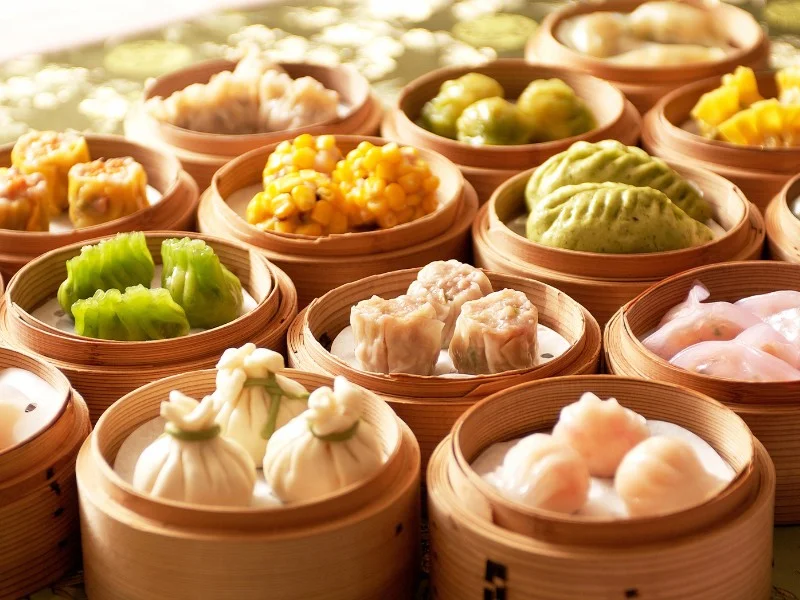
Where To Eat Dim Sum In Singapore?
Singapore is renowned for its diverse and delicious cuisine, and dim sum is no exception. Here are some top spots to enjoy this beloved Chinese cuisine:
- Swee Choon Tim Sum Restaurant: Located in Jalan Besar, Swee Choon Tim Sum Restaurant is a popular spot for dim sum lovers, serving up classic dishes like Har Gow (shrimp dumplings) and Char Siu Bao (barbecue pork buns) alongside unique items like Crispy Prawn Rolls and Fried Mee Sua.
- Tim Ho Wan: Originally from Hong Kong, Tim Ho Wan is a Michelin-starred dim sum chain with locations throughout Singapore. Highlights include their famous Baked Bun with BBQ Pork and Steamed Egg Cake.
- Imperial Treasure: With several locations throughout the city, Imperial Treasure is a luxurious option for dim sum, featuring high-end ingredients like abalone and bird’s nest in dishes like Steamed Scallop Dumplings and Double-boiled Fish Maw Soup.
- Yan Ting: Located in the St. Regis Hotel, Yan Ting offers an elegant dim sum experience with dishes like Truffle Mushroom Bao and Steamed Lobster and Scallop Dumplings, as well as a wide selection of tea.
- The Dim Sum Place: This casual eatery in Bugis offers a range of dim sum classics, including Siew Mai (pork dumplings) and Custard Bun, as well as more innovative dishes like Cheesy Lobster Ball and Salted Egg Yolk Lava Croissant.
- Asia Grand: Located in the Odeon Towers, Asia Grand offers a wide range of dim sum dishes, from Steamed Chicken Feet to Fried Carrot Cake. Don’t miss their signature Salted Egg Custard Bun!
- Crystal Jade: With locations throughout the city, Crystal Jade is a well-known name in Singapore’s dim sum scene, offering classics like Pork and Shrimp Dumplings and Steamed Custard Bun alongside more modern dishes like Baked Cheese Tart and Scallop and Spinach Dumplings.
- Wah Lok: This award-winning restaurant in the Carlton Hotel serves up a range of traditional and innovative dim sum dishes, including Fried Dumplings with Prawns and Chives and Baked Barbecue Pork Puff.
- Swee Heng 1989 Classic: This casual eatery in Toa Payoh offers affordable and delicious dim sum dishes, including Fried Prawn Rolls and Steamed Rice Rolls with BBQ Pork.
- Yum Cha: With locations in Chinatown and Orchard, Yum Cha offers a modern take on dim sum with dishes like Flowering Mushroom Dumplings and Salted Egg Yolk Custard Pau. Don’t miss their cute and Instagram-worthy Piggy Custard Bun!
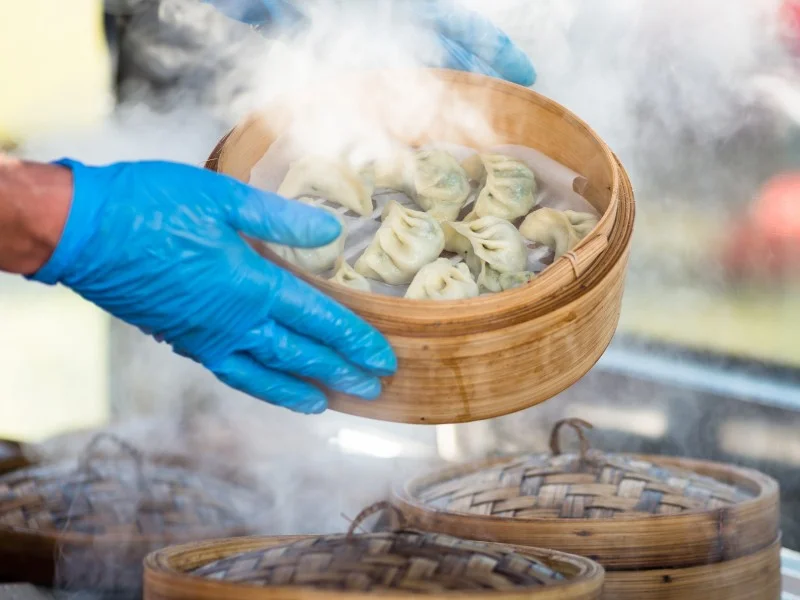
Where To Eat Dim Sum In Guangzhou, China?
Guangzhou, also known as Canton, is considered by many to be the birthplace of dim sum. Here are some of the best places to sample this culinary tradition in the city:
- Tao Tao Ju: Established in 1880, Tao Tao Ju is one of the oldest and most famous dim sum restaurants in Guangzhou. Located in the historic Yuexiu district, the restaurant offers a range of classic dishes like Shrimp Dumplings and Steamed Pork Buns.
- Guangzhou Restaurant: With a history dating back to 1935, Guangzhou Restaurant is another popular spot for dim sum in the city. Located in the Liwan district, the restaurant is known for its high-quality ingredients and traditional Cantonese cuisine.
- Lei Garden: With multiple locations in Guangzhou, Lei Garden is a popular chain of dim sum restaurants known for its elegant ambiance and delicious food. Highlights include the Baked Barbecue Pork Bun and the Crispy Fried Prawn Dumplings.
- Panxi Restaurant: Located in the Tianhe district, Panxi Restaurant is known for its upscale atmosphere and high-end dim sum dishes like Abalone Dumplings and Steamed Shrimp with Chives.
- Lianxiang Lou: Another historic dim sum restaurant in Guangzhou, Lianxiang Lou has been serving up traditional Cantonese cuisine since 1889. Located near the Yuexiu Park, the restaurant is known for its fresh ingredients and authentic flavors.
- Wuyangcun Dim Sum: Located in the Haizhu district, Wuyangcun Dim Sum is a local favorite for its affordable prices and delicious dumplings. Don’t miss the Steamed Rice Rolls with Shrimp and the Pan-fried Turnip Cake.
- Guangzhou Dim Sum Academy: This unique restaurant not only serves delicious dim sum, but also offers classes and workshops for visitors interested in learning how to make these delicacies themselves. Located in the Panyu district, the restaurant is a must-visit for foodies and aspiring chefs.
- Taotaoju Xinghai Restaurant: This upscale branch of the Tao Tao Ju restaurant chain is located in the Zhujiang New Town area and offers a more modern take on traditional dim sum dishes. Highlights include the Steamed Crab Meat and Egg White Dumplings and the Baked Pineapple Buns.
- Jin Yue Xuan: This elegant restaurant in the Baiyun district offers a wide range of dim sum dishes, including the popular Deep-fried Shrimp Balls and the Steamed Rice Rolls with Beef.
- Dim Sum Square: This casual eatery in the Liwan district offers affordable and delicious dim sum dishes in a no-frills atmosphere. Don’t miss the Fried Glutinous Rice with Chicken or the Steamed Shrimp and Bamboo Shoots Dumplings.
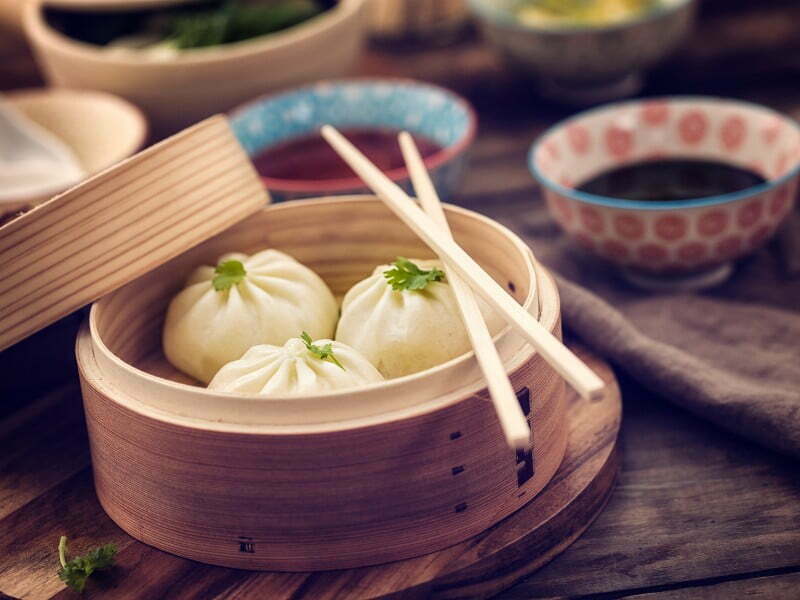
Best Places To Eat Dim Sum In North America and Europe
North America and Europe are home to many excellent places to eat dim sum. This Cantonese tradition is enjoyed worldwide and has inspired many innovative adaptations. Here’s a detailed look at some of the top dim sum restaurants across North America and Europe.
North America
- Yank Sing – San Francisco, CA, USA: Yank Sing is a household name in San Francisco when it comes to dim sum. Known for their upscale and modern take on this culinary tradition, Yank Sing’s offerings are impressive. From shrimp har gow, xiao long bao, to the Peking duck, each dish at Yank Sing is handcrafted using high-quality ingredients. The restaurant’s clean and elegant decor also offers an enjoyable ambiance.
- Nom Wah Tea Parlor – New York City, NY, USA: As the oldest dim sum restaurant in New York City, Nom Wah Tea Parlor has been serving traditional dishes since 1920. Located in the heart of Chinatown, it’s famous for its old-school charm and delicious dim sum. The “Original Egg Roll” and “Shrimp & Snow Pea Leaf Dumplings” are must-tries here.
- Bao Bei – Vancouver, BC, Canada: This modern Chinese brasserie blends traditional dim sum with Canadian influences. The innovative menu at Bao Bei includes items like sticky rice cake with lamb merguez and shaoxing wine, and their sesame flatbread. The warm and inviting atmosphere, along with a notable cocktail program, makes Bao Bei a go-to for locals and tourists alike.
- Imperial Lamian – Chicago, IL, USA: Renowned for their hand-pulled noodles and colorful xiao long bao, Imperial Lamian serves up a feast for the eyes as well as the palate. Their modern take on dim sum is elevated by unique offerings such as truffle xiao long bao and rainbow-colored dumplings. The contemporary design of the restaurant enhances the dining experience.
Europe
- Duddell’s – London, UK: Set in a historic building in London Bridge, Duddell’s offers Michelin-starred Cantonese cuisine and a superb selection of dim sum. Try their decadent Truffle Har Gau or the Crispy Peking Duck Pancake. The restaurant’s interior, which features modern art and elegant furnishings, makes the dining experience even more special.
- Orient London – London, UK: Located in the bustling Chinatown district, Orient London serves up an extensive menu of traditional dim sum. Known for its classics like Sui Mai, Har Gau, and Cheung Fun, this restaurant is a popular choice for dim sum lovers. The elegantly adorned dining room adds to the overall charm.
- Yauatcha – Soho, London, UK: This Michelin-starred restaurant offers an extensive range of dim sum with a modern touch. The Venison Puffs and Scallop Shui Mai are crowd favorites. Yauatcha’s interior, with its aquarium and blue lighting, creates a modern and relaxing atmosphere.
- Canton – Amsterdam, Netherlands: Located in the heart of Amsterdam’s Chinatown, Canton offers a variety of dim sum dishes in a casual setting. The restaurant is particularly known for its steamed dumplings and barbecued pork buns. Its unpretentious atmosphere is inviting, offering a homey feel to its guests.
- Dim Sum King – Paris, France: This restaurant stands out with its extensive menu of over 60 varieties of dim sum. The Har Gau and Char Siu Bao are not to be missed here. With its welcoming ambiance and authentic flavor profiles, Dim Sum King provides a great experience to its patrons.
These locations each offer a unique interpretation of the dim sum tradition, from faithful recreations of classics to more adventurous fusion dishes. Regardless of the specific style, all of them provide a great opportunity to enjoy this delicious culinary tradition.
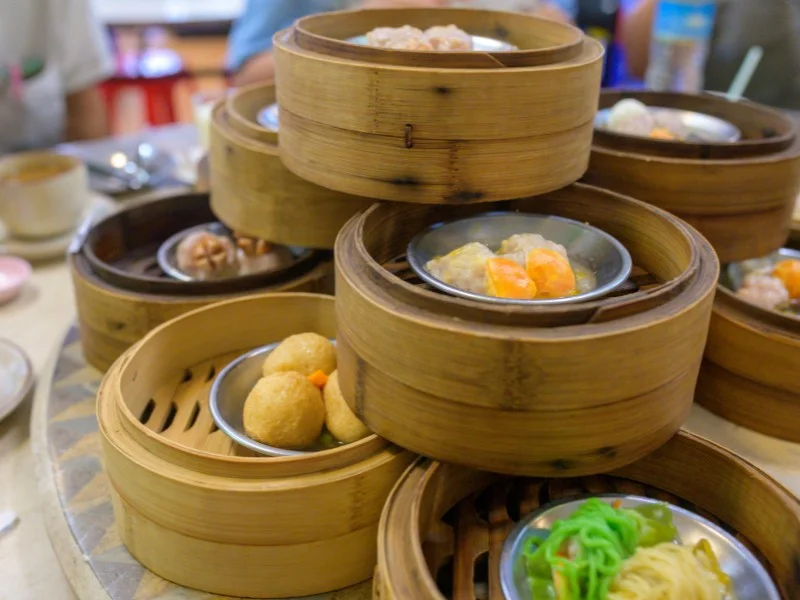
Cultural Impact Of Dim Sum
The influence of dim sum extends across various domains, including gastronomy, social interaction, business, and the creative arts, reshaping perceptions of Chinese cuisine and fostering cultural exchange on a global scale.
Cultural Exchange and Global Gastronomy
- Global Recognition of Chinese Cuisine:
- Dim sum has played a pivotal role in enhancing the global recognition and appreciation of Chinese cuisine. Originally a custom of the Cantonese region, dim sum has spread to every corner of the world, acting as a gateway for people to explore the rich flavors and ingredients of Chinese cooking. Through dim sum, a diverse array of Chinese culinary traditions, such as the use of delicate wrappers, savory fillings, and innovative flavor combinations, have become more accessible to international audiences.
- Fusion and Innovation:
- The global proliferation of dim sum has also sparked a wave of culinary innovation, leading to the creation of fusion dishes that blend Chinese flavors with local ingredients and culinary techniques. This cross-cultural culinary exchange has enriched global gastronomy, giving rise to dishes that incorporate the best of both worlds, such as dim sum with Western-inspired fillings or dumplings infused with regional spices. This fusion reflects the adaptability and creativity inherent in the dim sum tradition.
- Influence on Other Food Cultures:
- Dim sum’s concept of small, shareable dishes has influenced other culinary traditions around the world. For example, the Spanish tapas and Italian antipasto share similarities with dim sum in that they both involve an assortment of small dishes meant to be enjoyed communally. This style of dining has been embraced by various cultures, promoting a more social and interactive dining experience that encourages conversation and connection.
Social Interaction and Community Building
- Yum Cha: A Social Tradition:
- The tradition of Yum Cha (drinking tea), which is intrinsically linked with the consumption of dim sum, has evolved into a cherished social event within Chinese communities. Yum Cha is not merely about eating; it is a time for families and friends to gather, share stories, and strengthen social bonds. The communal nature of dim sum, where dishes are placed in the center of the table for everyone to share, fosters an environment of camaraderie and unity.
- Community Hubs:
- In Chinese communities around the world, dim sum restaurants serve as vital social hubs. These establishments are more than just places to eat; they are integral to the fabric of the community, functioning as venues for socialization, business meetings, and even political discussions. Dim sum restaurants in Chinatowns globally act as cultural anchors, preserving traditions and reinforcing community identity. They provide a space where the diaspora can connect with their heritage and share it with others.
Impact on Business and Economy
- Economic Contributions:
- The global popularity of dim sum has significantly impacted the business landscape, particularly in the food and hospitality industries. The demand for dim sum has led to the proliferation of specialized dim sum restaurants worldwide, contributing to local economies by creating jobs and attracting tourism. These establishments often become culinary destinations in their own right, drawing food enthusiasts eager to experience authentic dim sum.
- Culinary Arts and Entrepreneurship:
- The intricate art of making dim sum, which requires specialized skills in dough preparation, filling, and folding, has created a niche market for chefs trained in this particular culinary tradition. This demand has led to the establishment of culinary schools and training programs focused on dim sum, further contributing to the growth of the global culinary industry. Aspiring chefs and entrepreneurs alike have capitalized on the popularity of dim sum, opening restaurants and businesses that celebrate this culinary art form.
Influence on Creative Arts
- Inspiration Across Media:
- Dim sum’s unique culinary style and cultural significance have inspired various forms of creative expression. In cinema, dim sum has been featured as a symbol of family and cultural identity. For instance, the 2014 Oscar-winning animated short film Feast was inspired by the director’s experience with dim sum, highlighting how food can evoke powerful emotions and memories.
- Literary Metaphors:
- In literature, dim sum is often used as a metaphor to explore deeper themes of cultural identity, family dynamics, and tradition. Amy Tan’s novel The Joy Luck Club famously uses dim sum to illustrate the complexities of mother-daughter relationships and the tension between preserving cultural heritage and adapting to a new environment. Dim sum serves as a poignant symbol of the blending of old and new, of tradition and modernity.
- Visual Arts and Design:
- The aesthetic appeal of dim sum—the delicate folding of dumplings, the vibrant colors of the dishes, and the iconic bamboo steamer baskets—has also influenced visual arts and design. Artists and designers have drawn inspiration from the intricate beauty of dim sum, incorporating its elements into paintings, photography, fashion, and even interior décor. The craftsmanship and presentation of dim sum have become a source of artistic inspiration, symbolizing precision, care, and cultural richness.
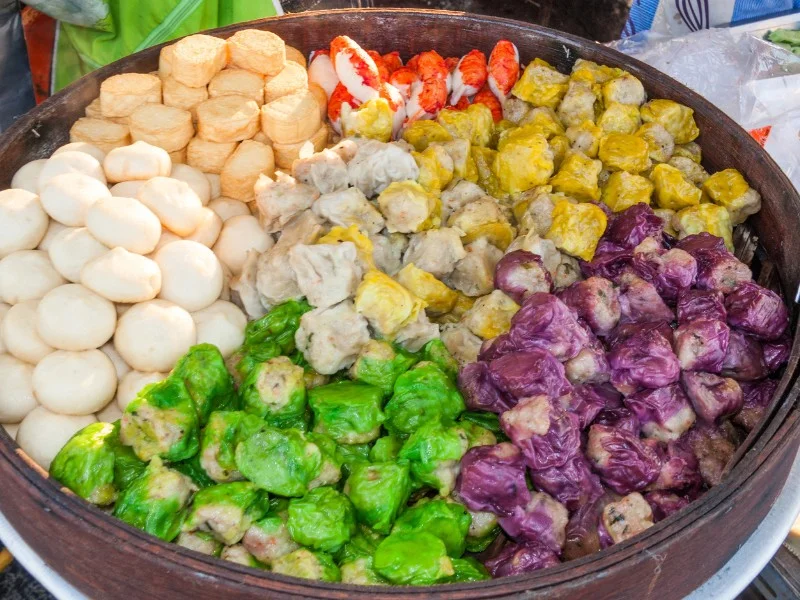
Dim Sum Final Thoughts
Dim sum is more than just a meal—it’s an experience, a tradition, and a celebration of food that brings people together. What makes dim sum so amazing is its ability to blend simplicity with complexity, offering a culinary journey that’s both comforting and adventurous. Each dish, whether it’s the delicate Har Gow or the bold Chicken Feet, tells a story of Cantonese culture, tradition, and innovation.
A Culinary Art Form
At its heart, dim sum is a true culinary art form. The meticulous craftsmanship involved in creating each dumpling, bun, and roll is a testament to the skill and creativity of the chefs who bring these dishes to life. From the paper-thin wrappers of Xiao Long Bao to the perfectly balanced flavors of Lo Mai Gai, every bite is a work of art that’s meant to be savored.
A Social Experience
Dim sum is also about the experience of sharing. Traditionally enjoyed in the company of family and friends, it’s a meal that encourages conversation, connection, and communal joy. The clatter of bamboo steamers, the aroma of freshly brewed tea, and the sight of a table filled with small plates—these are the elements that make dim sum a feast for the senses, and a social ritual that transcends generations.
A World of Flavors
What makes dim sum truly special is its incredible diversity. Whether you’re in the mood for something sweet, savory, spicy, or sour, there’s a dish that will satisfy your cravings. The variety of flavors and textures—crispy, chewy, soft, and tender—ensures that every meal is a new adventure. With regional variations and modern twists on classic dishes, there’s always something new to discover.
A Connection to Culture
Finally, dim sum offers a deep connection to Cantonese culture and history. It’s a living tradition that has been passed down through the generations, evolving and adapting while staying true to its roots. Each dish is a reminder of the rich culinary heritage of the Cantonese people and a delicious way to experience a piece of that history.
In the end, what makes dim sum amazing is its ability to bring joy—through taste, through tradition, and through togetherness.
Have you tried dim sum before? What are some of your favorite dishes? Any favorite spots to eat dim sum? If you’ve never tried it before is it something that looks appealing to you?

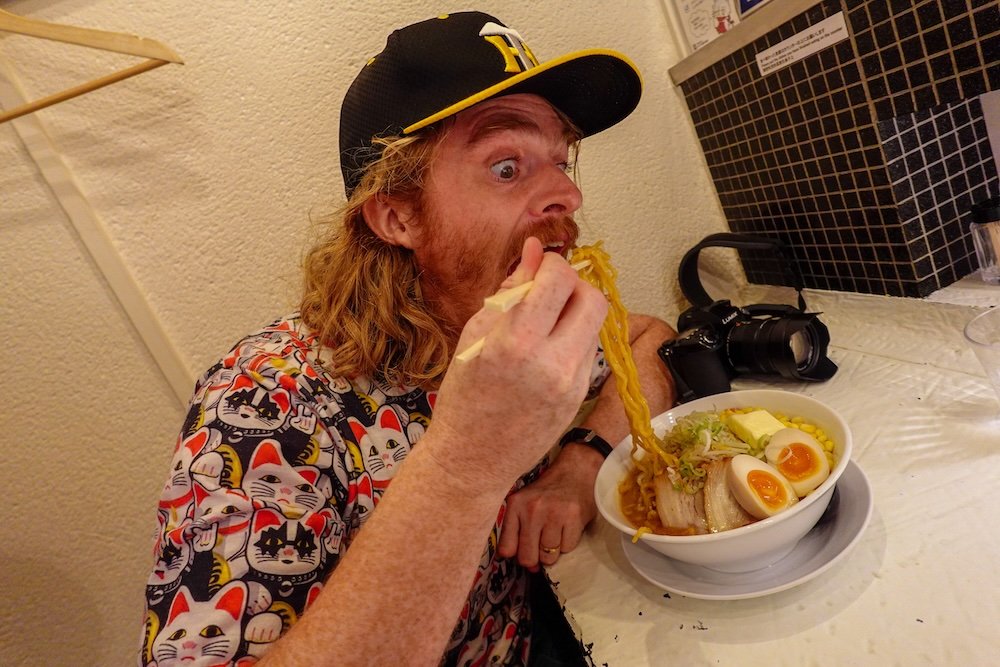
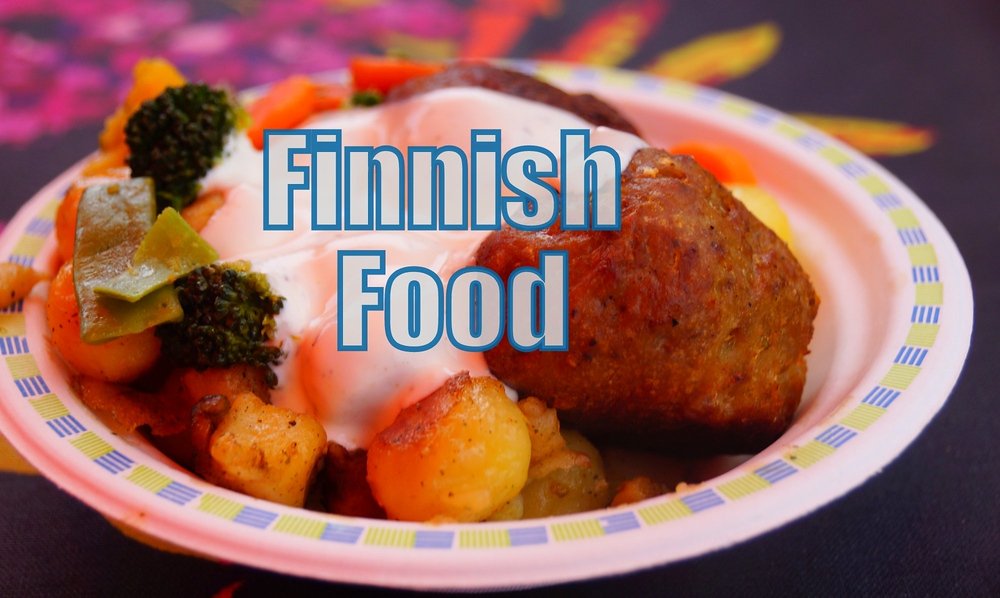

I love the Dim Sum in Hong Kong, it is amazing to see that even a small tea house at the corner of the street can serve very delicious snacks, no wonder many people regard Hong Kong as a gourmet paradise…
Your Dim Sum videos are my favorites from your YouTube channel. I would not feel like eating at the crack of dawn though!
Great post! We luv dim sum – and have enjoyed lots of it on our trips to Hong Kong! We’re also very fortunate that here in Vancouver (Canada), we have hundreds of great Asian restaurants to satisfy our dim sum cravings whenever we want :-).
Thank you! Indeed, Vancouver is a wonderful place to sample Asian cuisine. I’m from Vancouver Island, so I would always get excited to visit Van when I was young.
Food guides are the best kind of guides 🙂
Thanks Stephanie 🙂
I agree with you!
Argh!!!! This is not helpful for my pregnant cravings situation…
I feel you Lillie even though I can’t be pregnant. Made me drool while reading through the entry. Gonna get some Chinese dinner tonight!
Best wishes with your quest for Chinese food James!
Sorry Lillie!
Having access to great dim sum restaurants while in Hong Kong has not been kind to my waistline 😉
I like Sticky Rice becase I like Rice from my childhood ,But I my country peoples did not eat but i like this way thank you for sharing and remanaing me
Thanks Julia,
I’ve become more fond of rice since basing myself in Asia.
They are basically bite sized morsels of heaven. Great post! Now I’m starving.
Thanks Lauren!
“Bite sized morsels of heaven”
That’s the best description I’ve ever heard 🙂
What an awesome cuisine! Dim-sum sounds interesting! I have been to Malaysia once for a few hours, didn’t get a chance to explore its food. But after reading this, I think I need to go back!
Thanks Renuka!
I hope you get to go back and try it 🙂
Looks adventurous and tasty. My go would be the sweet one, with the sesame seeds 🙂
If they would not be sticky, they remind me of the Idli of south India made of Legumes and rice flour, in different varieties, eaten with different chutneys, my favourite being a coconut chutney! They do need a chutney or a sauce to go along, as they hardly have any flavour.
I would love to try the Idli!
Those are some crisp photos of dumplings! We went to dim sum just the other day in Vancouver. And again nearby our house. Love it every time, but we’re kind of thinking Vancouver’s food scene is pretty awesome. =D
Nicole,
Vancouver does have a great food scene! I miss the diversity and quality.
Yum! Fabulous post and wonderfully educational videos! Thank you! I have to admit to not really knowing the definition of dim sum 20 minutes ago and to being quite certain that I will now have it for dinner tonight – even if I am far from Asia!
Thanks Mary!
Let me know how that goes! I’d be interested to hear about your favorite kind 🙂
Yummy post! I will have to check out your recommendations.
Thanks Jackie!
I hope you enjoy it 🙂
Dim Sum Is Yum Yum. One of my favorites is the steam dumplings. I always get these when I visit China and stuff my face till I’m sick of it.
Those are really good as well! I’m such a pig whenever I go to eat dim sum. No small wonder my pants all feel tight.
Great post – I actually tried Dim Sum for the first time this past weekend in my home city at a fantastic place called Baby Buddha Chinese Teahouse! The pork buns were amazing!
That’s cool Kerri!
I bet you’ll be going back again soon 😉
I love Dim Sum so much, although I’ve not been down to Hong Kong yet (I do need to visit) I had some wonderful Dim Sum in Shanghai from street vendors and shops alike. There is so much variety in Dim Sum its great!
That’s great Alex. I didn’t realize Shanghai had such a thriving dim sum scene.
Yummy!! Drooling at all the dim sums here! I have yet to try Dim Sum Square and Tim Ho Wan in Hong Kong! Must give it a try next time I go there! I love har gow best! Oh yeah, still have push carts at dim sum restaurants in Malaysia but they are disappearing fast! : )
Thanks! I’ve also noticed the push carts disappearing fast as well. It’s too bad!
Everything looks yummy. I’ve never had dim sum in Asia but I’ve had tons in Toronto due our large Asian population. It’s so good and such a fun thing to do with friends! I’d totally be intimated to go at one of these meals alone though …
Thanks Cheryl 🙂 It’s definitely a social meal. It’s rare to see someone alone eating dim sum.
Love dim sum. There’s the best dim sum place in London’s Chinatown where there’s always a line coming out the door. We miss it! Great post 🙂
Thanks Carmen,
I’m intrigued by all of the suggestions – in the comments – for places to try dim sum abroad.
We lovvve dim sum ~ it has always been a favorite. We blogged about eating it in Chinatown, San Francisco a year ago. The most fun place that we ate dim sum was Lima, Peru on Christmas day when everything else was closed ~ you can always count on dim sum to delight. Many cities in the world have Chinatowns, worth seeking out. Luckily for us, we are living in SE Asia now, so dim sum like food is all around.
Wow!
I had no idea you could get dim sum in Lima. We’ll be heading there next year. I’ll definitely keep that in mind 🙂
Cha siu bao are by far my favourite as well! Man, those things are so great. I’m pretty sure during my three months in China that was all I ate 😉
Thanks Laurence,
We’ve been eating this daily in China as well. I’m having to compensate by going for a run every night 😉
Not heard of dim dim before but seems like a dish I might want to try, certainly an exotic food. I don’t mind trying the sesame balls.
I hope you get a chance to try in Shalu. If you have a sweet tooth the sesame balls would be a great first choice.
Dim Sum is the absolute greatest thing in the universe for people who have no idea what’s going on and just want to point to things and eat them and they’ll be amazing. I wish other cultures would steal this idea and serve food like this all over the world. I mean, we stole gunpowder and fireworks from them, so why not snag their food serving culture too?
Great idea! I’ve often felt limited by western/european menus featuring only mains and appetizers. I want it all!
Lovely pictures and videos. They made me salivate. I love dimsum as well. In India, the Tibetan momos are quite popular and commonly found. I love to eat them steamed or fried. 🙂
Thank you!
I’ve tried the Tibetan momos before while traveling in Mcleod Ganj. They are good – especially on a cool/cold day.
Surprisingly I think this is one of those foodie/travel thingies that I haven’t done, at least done right. I don’t know why. With your handy dandy guide, I think I’m going to have to dive in again. Going to Malaysia in December…I’ll try and find a good Dim Sum restaurant.
Thanks Corinne,
Malacca and Georgetown are both great options to try it – especially early in the morning.
Great guide Sam. You have no idea how much I enjoyed our last dim sum dinner. Next time I need to be more careful as I burned my mouth when trying the fried balls stuffed with mince 🙂
Hahahaha, I’ve done that so many times as well.
I love dim sum! My friend’s father is a native Hong Konger and took me to one of the old school places where the ladies still serve the dishes from push carts. Shrimp dumplings and pork puns are two of my favorites, along with deep fried yams stuffed with roast pork. Delish!
It sounds like we enjoy similar tastes in dim sum Heather. The push cart restaurants are my favorite: it’s like a buffet on wheels 🙂
Where I live, Dim Sum is a Sunday brunch favorite… meet your friends and spend a couple of hours catching up – the pace of service and the small bites are perfect for such a gathering.
That’s awesome! Dim sum = best brunch ever 🙂
Funny name 🙂
Is there any difference between Dim Sum and Min Pao ?
I’m not sure to be honest!
Great overview Samuel,
I’m a dim sum fan also, but I have to fly to Honolulu or San Francisco to even get my hands on some of these puppies, if you love har gaw, then you would probably also love the deep fried shrimp balls with sweet mayonnaise or even Sui Mai with pork and shrimp…missing it already!
Thanks Noel!
I wish it was easier to eat dim sum abroad.
I’ll definitely try those! Anything with shrimp is worth sampling 🙂
Sam & Audrey, thanks for reminding me how good it was in Hong Kong! My sister and brother in law took me to their favourite places in Central, Wan Chai, Causeway Bay, Happy Valley (HKJC, actually), and Tai Koo.
Thanks Henry!
I can imagine you’ve been to some of the best spots in all of Hong Kong!
I hope you can go back soon 🙂
Handy resource, especially if you are not with a local! I LOVE Dim Sum and especially those moments when you drop something from your chopsticks and you quickly place said food between them like it never happened 😉 I can’t do a lot of Dim Sum in one bite.
Hahahaha, I’ve sure done that quite a few times. Some of those little bites are rather slippery 😉
Almost all of my favorite memories of Hong Kong involve food, and with good reason too! The first thing we decided do do once we got to the city was drop our bags and get dim sum out by the harbor 🙂
Kay,
I would say that’s a perfect way to first start exploring the city 🙂
Nice post Sam, now I’m really craving some dim sum. One of my all-time favorites is lo mai gai, and also the fried taro puffs stuffed with minced pork!
Thanks Mark!
I love the taro puffs with minced pork as well!
When we’re in Bangkok again we’ll have to feast on some dim sum in Chinatown together 🙂
Outstanding resource … had some dim sum in Penang, and they bite-sized versions of heaven!
The dim sum in Penang is great! Enjoy gobbling it down 🙂